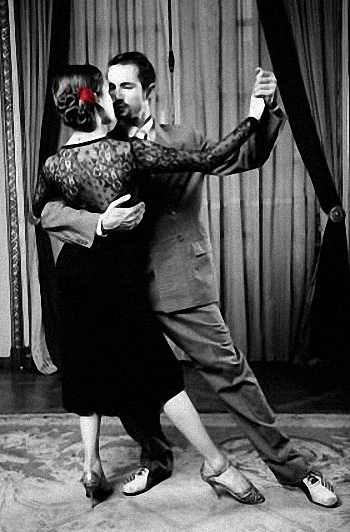The History of the Tango
The history of the tango is shrouded in mystery since the one clear fact that is known is it began among the poorer classes of Argentina. Originally danced exclusively by men, it evolved into one of the most popular couples dances of the twentieth century. It has clear influences from the Spanish flamenco and was probably also influenced by the Viennese waltz and the polka, brought to Argentina by Polish and German immigrants.

Origins of the Tango
Early in Argentina’s history, most of the immigrants who came to the country were men hoping to work for a few years and return to their families. Few returned home and the immigration policy of importing male workers resulted in an extreme shortage of women.
Brothels flourished and since men often had to wait for long periods for an available woman, the brothels began offering entertainment to pass the time. The entertainment was in the form of music and dance.
Some believe that the first tango dancers were African slaves performing in the brothels. The dance was performed by men. Couples dances did not originally involve touching any body part but the hand and consisted of formal steps.
The waltz and the polka were the first dances where couples danced face to face and when they were introduced into polite society they were considered scandalous.
Tango in Europe
It was during the mid and late 19th century that tango evolved into a couples dance, only the third dance to involve a man and a woman facing each other and touching more than hands.
It continued to be performed mostly among the poor who were illiterate and no written records from these early days exist. Near the turn of the 20th century the dance began making its way out of Argentina and found a new home in Paris, where social conventions were relaxing following the First World War.
The tango caught fire in Paris which has always been considered an important center for Western European and American culture. Once accepted by the upper classes in France, it quickly spread throughout Europe and the United States.
From the 1930s to the 1950s, tango enjoyed a golden age and became an important part of classic ballroom dancing.
Influenced by the many cultures of immigrants who settled in and around Buenos Aires, the tango is uniquely Argentinian. The overtly sexual tone of the dance changed perceptions and allowed other Latin dances like the rumba, the samba and the mambo to be introduced into mainstream society around the world. While the tango is only part of the rich musical and dance tradition of Argentina, it brought the country international recognition.




